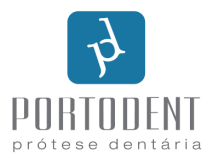Zumbido e sua relação com a disfunção temporo-mandibular: relato de caso
Resumo
Atualmente a literatura discute a relação entre a disfunção temporo-mandibular (DTM) e o zumbido. É perceptível que mesmo após vários anos ainda não está totalmente claro qual é a relação entre as mesmas. Geralmente pacientes que possuem DTM são mais propensos a desenvolverem o zumbido, a idade também é outro fator importante sendo predominante a partir dos 43,5 anos, além de que, sua incidência é maior em pacientes do sexo feminino. Se o zumbido for causado pela DTM, tratando apenas a DTM estará ao mesmo tempo resolvendo o zumbido do paciente. O objetivo deste trabalho é relacionar ambas as patologias, reportando as características das mesmas, demonstrando tratamentos alternativos que quando realizados de maneira correta, podem solucionar ambas as patologias.
Palavras-chave
Texto completo:
PDFRefer?ncias
Ralli M, Greco A, Turchetta R, Altissimi G, Vincentis M, Cianfrone G. Somatossensory tinnitus: current evidence and future perspectives. International Medicine Research 2017; 45(3): 933-47.
- Catão MHCV, Oliveira PSC, Caneiro VSC. Avaliação da eficácia do laser de baixa intensidade no tratamento das disfunções têmporo-mandibular: estudo clínico randomizado. Revista CEFAC 2013;15(6): 1601-8.
Lacerda ABM, Facco C, Zeigelboim BS, Cristoff JK, Fonseca VR. The impact of tinnitus on the quality of life in patients with temporomandibular dysfunction. International Tinnitus Journal 2016; 20(1): 24-30.
Song HS, Shin JK, Lee J, Lee YJ, Kim MR, Cho JH, et al. Association between temporo mandibulardisorders, chronic diseases, and ophthalmologic and otolaryngologic disorders in Korean adults: a cross-seccional study. Plos One 2018; 13(1): 1-16.
- Ravuri SP. Tinnitus and temporomandibular joint disorders subtypes. Washington. Tese [Mestrado em ciência da odontologia] Universidade de Washington;2017.
- Skog C, Fjellner J, Ekberg E, Haggman HB. Tinnitus as a comorbidity to temporomandibular disorders a systematic Review. Journal of Oral Rehabilitation 2018; 5(1): 1-13.
- Camparis CM, Formigoni G, Teixeira MJ. Clinical evaluation of tinnitus in patients with sleep bruxism: prevalence and characteristics. Journal of Oral Rehabilitation 2005;32(11):808814.
Costen JB. A syndrome of ear and sinus symptoms dependent upon disturbed function of the temporomandibular joint. Annals of Otology, Rhinology & Laryngology 1934;106(1): 805-19.
Fernandes J, Siqueira JK, Godoi GDA, Camparis CM. Association between painful temporomandibular disorders, sleep bruxism and tinnitus. Brazilian Oral Research 2014; 28(1): 104-19
Bousema EJ, Koops EA, Dijik PV, Dijkstra PU. Association between subjective tinnitus and cervical spine or temporomandibular disorders: a systematic Review. Trends in hearing 2018; 16(3): 102-14.
Blanco Aguilera A, Gonzalez Lopez L, Blanco Aguilera E. Relationship between self-reported sleep bruxism and pain in patients with temporomandibular disorders. Journal of Oral Rehabilitation 2014;41(8):564572.
Saldanha AD, Hilgenberg PB, Pinto LM. Are temporomandibular disorders and tinnitus associated? CRANIO® 2012;30(3):166171
Buergers R, Kleinjung T, Behr M. Is there a link between tinnitus and temporomandibular disorders? Journal of Prosthetic Dentistry 2014;111(3):222227
Lee CF, Lin MC, Lin HT. Increased risk of tinnitus in patients with temporomandibular disorder: a retrospective population-based cohort study. European Archives of Oto-Rhino-Laryngology 2016;273(1):203208.
Buergers R, Kleinjung T, Behr M, Vielsmeier V. Is there a link between tinnitus and temporomandibular disorders? J Prosthetic Dentistry 2014;111:222-227.
Morais AA, Gil D. Tinnitus in individuals without hearing loss and its relationship with temporomandibular dysfunction. Brazilian Journal of Otorhinolaryngology 2012;78:59-65.
Valente JP, Pinheiro LA, Carvalho GM, Guimarães AC, Mezzalira R, Stoler G et al. Evaluation of factors related to the tinnitus disturbance. International Tinnitus Journal 2012;17:21-25.
Badel T, Savi-Pavicin I, Zadravec D, Marotti M, Krolo I, Grbesa D. Temporomandibular joint development and functional disorders related to clinical otologic symptomatology. Acta Clinica Croatica 2011;50:51-60.
Vielsmeier V, Kleinjung T, Strutz J, Bürgers R, Kreuzer PM, Langguth B. Tinnitus with temporomandibular joint disorders: a specific entity of tinnitus patients? Otolaryngology Head and Neck Surgery 2011;145:748-752.
Saldanha AD, Hilgenberg PB, Pinto LM. Are temporomandibular disorders and tinnitus associated? CRANIO® 2012;30(3):166171.
Vielsmeier V, Kleinjung T, Strutz J, Bürgers R, Kreuzer PM, Langguth B. Tinnitus with temporomandibular joint disorders Otolaryngol Head Neck Surgery 2011;145(5):748 752.
Attanasio G, Leonardi A, Arangio P, et al. Tinnitus in patients with temporo-mandibular joint disorder: proposal for a new treatment protocol. Journal of Cranio-Maxillo-facial Surgery 2015;43(5):724727.
Apontamentos
- N?o h? apontamentos.
Direitos autorais 2020 Revista da AcBO - ISSN 2316-7262
Para ficar por dentro de todas as |
|
 www.boneheal.com.br (11) 2503-0529 |


